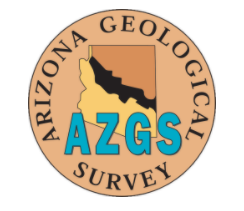Natural hazards abound in Arizona.
At the top of list: flash floods, severe weather, landslides and debris flows, earthquakes, and earth fissures. Other hazards, include: problem soils – a multi-billion dollar problem annually in the U.S.; volcanism – Arizona has three active volcanic fields and 1000s of extinct volcanoes, some of which are prone to collapse; locally, radon and arsenic can threaten health and human life.
Across America, floods, landslides and severe weather cost billions of dollars annually and result in scores of deaths and thousands of injuries.
Managing Natural Hazards
The best most efficacious way of managing natural hazards is to build a comprehensive historical, and whenever possible, prehistorical (e.g., trenching active faults to document thousands of years of activity), record of hazard events. Civil authorities, land managers, and the emergency management community can leverage that record to stage and deploy meaningful land management and emergency preparedness at the community level.
Hazard preparedness at the family-, business-, and community-level is critical to building a resilient community capable of mitigating the worst of natural hazards events.
Role of AZGS
Our chief role is to document and monitor geologic hazards associated with earth materials – soils, regolith, rock, rivers and landforms – and earth processes – earthquakes, landslides and volcanic activity. We share our observations and research with civil authorities and land management agencies to inform their decision-making.
Our collective goal; a stronger more resilient Arizona.
Natural Hazards in Arizona
Earth fissures and subsidence impact select valleys in central and southern Arizona
Floods occur in each state and cost upwards of six billion dollars annually
Shrink/swell soils cause more damage to homes than do floods, tornadoes, and hurricanes combined
Landslides in Arizona destroy homes, damage roads, disrupt utilities and infrastructure, and lead to deaths and injuries
In Arizona, volcanic rocks and features are ubiquitous in space and time
Arizona has earthquakes; seismologists like to say, “Earthquakes don’t kill people, buildings kill people”
Haboobs, drought, extreme heat & cold, torrential rains, dust devils and tornadoes, and hurricanes
Radon is the second leading cause of lung cancer in the U.S.
Addressing earthquake hazards and risk that threaten the safety and resilience of the people, property, and infrastructure of Arizona
Natural Hazards Viewer
Interactive map highlights fissures, floods, fires, earthquakes, and fault lines in Arizona.




